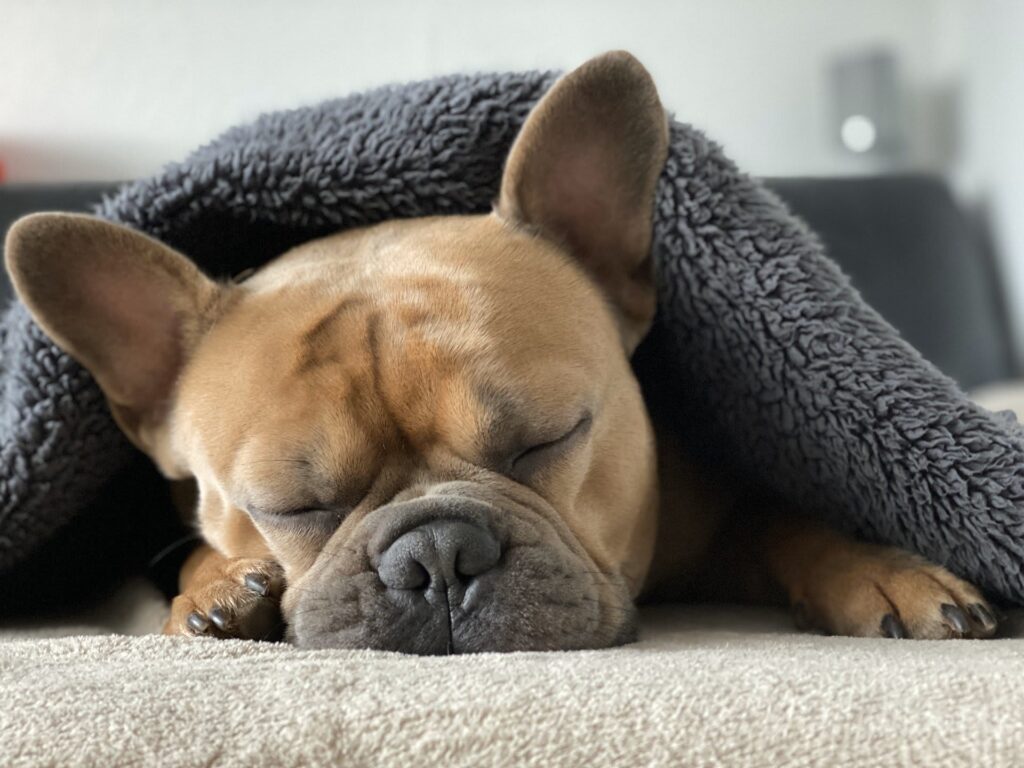So you have a new addition to the family — and a furry one, too. Puppies are adorable and a lot of fun, but with caring for a pet comes learning and adapting to their needs. Some animals can develop anxiety over behaviors you might not have even thought could upset them. Additionally, you might not know how to care for a pet with anxiety, or how to prevent this from happening. Keep reading for tips and tricks on how to ease your puppy’s anxiety and techniques to prevent them from developing it.
During Travel

Source: thundershirt.com
Many pets get anxiety during car rides because of the noises, motion, and occasional bumps in the road. Oftentimes, they also feel trapped in the small space of both the car and carrier. The process can be especially confusing and stressful for a puppy, who likely hasn’t experienced a car ride before. However, there are steps you can take to ease their anxiety during this process.
Short Distances
A short drive home from the shelter or vet will be easier to manage for both you and your pup. The less lengthy the ride, the less stress your dog will experience. For these drives, focusing on your puppy’s comfort will help relax them during the process.
Try to make a cozy space for them in your car by playing soothing music or cracking the window for fresh air. Make their carrier comfy by laying down a mat or blanket inside and giving them some plush toys. You could even give them a couple of treats as a reward.
It’s important to make sure you transport your puppy in a carrier, especially for their first drive. Their behavior while undergoing new experiences can be hard to predict, so it’s better to be safe than sorry. Additionally, some dogs get carsick, and placing them in a carrier will help keep them safe and contain any accidents.
Long Distances
Sometimes adoptions don’t always take place through a breeder or shelter in your hometown. Depending on where you found your pup, they might be a considerable distance from you. Having to travel cross-country can be a hassle and cause stress for your new dog, especially if you’re unfamiliar with transporting pets long distances.
If you’re in a situation like this, it’s typically in your best interest to consider using a pet transport service like CitizenShipper.com. These services have drivers who will pick up and drive your pooch straight to your house, even from several states away. These drivers know how to handle pets while in the car, and they’ll send you plenty of updates along the way.
It’s also a great idea to use pet transportation services if you’re moving. The process can be stressful enough, especially if your new living space is far away. It might also be difficult to find space for your pet in the car along with all the boxes. This can create a claustrophobic environment that will worsen their anxiety. In this situation, it might be best to let the professionals transport your dog.
At Home

Source: fivewalls.com
Once you get your pup home, it’s just as important to make sure their living space is safe and comfortable. The key to reducing their anxiety at home is by reducing their exposure to stressful conditions or objects. Additionally, picking up certain behaviors can help lessen their uneasiness.
Prevent Separation Anxiety
Unfortunately, pets with separation anxiety are fairly commonplace. Sometimes this can develop in anxious pets no matter what you do. However, there are steps you can take to prevent your pooch from becoming distressed when you leave the house.
One of the most effective practices is to not make a big deal out of leaving and returning home. When you are about to head out, don’t pet your puppy too much. Give them a couple quick pets, then leave. Similarly, emulate the same behavior when you come back. It can be difficult not to get excited when you see your pup again, but it’s for their wellbeing that you stay calm.
Dogs are very receptive animals and can pick up on your mood. That’s why you shouldn’t get them wound up before you leave or when you return home. They will begin to associate this behavior with your coming and going, which can cause them to become anxious when you leave. If you act like it’s no big deal when you leave the house, they usually won’t either.
Get Them Used to Other People

Source: earth.com
You probably know how annoying it can be to visit someone’s house when they have a dog that doesn’t stop barking at you. This is how a dog reacts when they feel anxious about new people or those they don’t see often. Luckily, there are some effective ways to prevent this behavior from developing.
When you welcome your new pup to your home, make sure they are introduced to multiple people. Even if you live alone, invite friends and family over to come visit your cute new pet. This will expose them to new people and get them used to the concept of ‘strangers’ entering their living space. You should also take them to interact with strangers in public, whether at work or out and about shopping. Socializing boosts their confidence. And the younger they are, the more effective this training technique will be.
Reduce Loud Noises
Animals tend to be startled by loud and sudden sounds. And being around an environment with lots of noise can cause your puppy to develop anxiety. To prevent this, it’s important to gradually expose your pet to a variety of noises. These sounds should include common household appliances, ringtones and alarms, children playing, buses moving by, and so on. As you acclimate your puppy to a variety of sounds, be careful not to overwhelm them with too much noise too quickly.
Remember to be Patient

Source: thesprucepets.com
Just like kids, puppies are growing and learning, and they might have trouble understanding. If you have a naturally timid pup, try to be gentle and patient with them. They’re not trying to cause you stress — they’re probably just confused and scared. So, make sure you go easy on them and give your little pooch lots of love.























